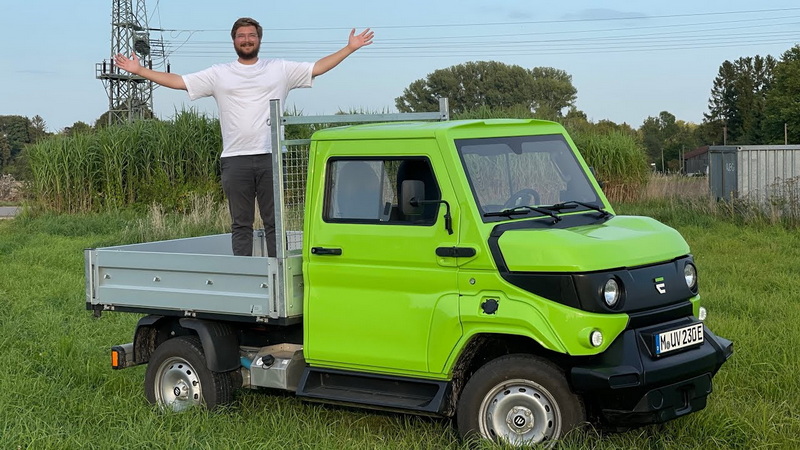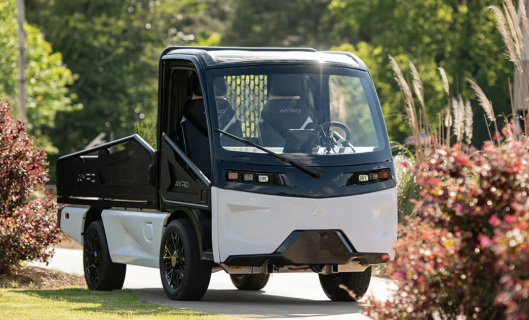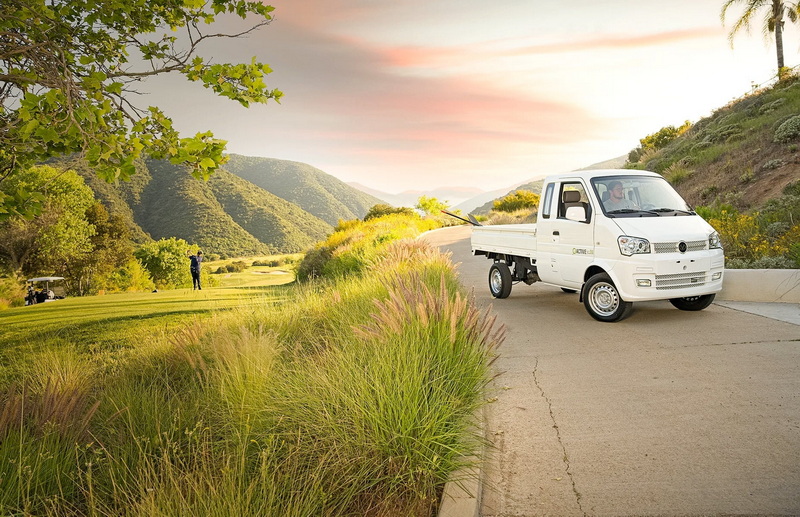Content Menu
● Introduction to Smart Cities and Electric Mini Trucks
>> Benefits of Electric Mini Trucks
● Integration with Smart City Infrastructure
● Technological Advancements
● Applications of Electric Mini Trucks
● Market Trends and Future Prospects
● Expansion of Electric Mini Trucks in Smart City Infrastructure
>> Role in Urban Logistics 2025
>> Latest Advancements
● Challenges and Opportunities
● Conclusion
● FAQ
>> 1. What are the primary benefits of using electric mini trucks in urban areas?
>> 2. How can electric mini trucks be integrated with smart city infrastructure?
>> 3. What are the common applications of electric mini trucks?
>> 4. What are the challenges facing the adoption of electric mini trucks?
>> 5. What role do government incentives play in promoting electric mini trucks?
The integration of electric mini trucks into smart city infrastructure is a rapidly evolving field that holds significant potential for enhancing urban mobility, reducing environmental impact, and improving the overall efficiency of transportation systems. This article explores the role of electric mini trucks in smart cities, their benefits, technological advancements, and future prospects.

Introduction to Smart Cities and Electric Mini Trucks
Smart cities are urban areas that leverage advanced technologies like IoT, AI, and data analytics to improve the quality of life for residents. One key aspect of smart city initiatives is the integration of sustainable transportation systems, where electric vehicles (EVs) play a crucial role. Electric mini trucks, in particular, offer a versatile and eco-friendly solution for urban logistics and transportation.
Benefits of Electric Mini Trucks
Electric mini trucks are more energy-efficient than traditional gas-powered vehicles, converting about 60-70% of electrical energy into motion, compared to the 20% efficiency of gas-powered vehicles. They produce zero tailpipe emissions, reducing air pollution and greenhouse gas emissions in urban areas. Additionally, they offer lower operational costs due to cheaper fuel (electricity) and reduced maintenance needs.
Integration with Smart City Infrastructure
Electric mini trucks can be seamlessly integrated into smart city initiatives through various technologies:
1. Vehicle-to-Grid (V2G) Technology: This allows electric vehicles to act as mini power banks, storing excess energy from renewable sources and feeding it back into the grid when needed. This setup helps balance energy supply and demand, reducing reliance on fossil fuels.
2. Smart Charging Stations: These stations use technology to optimize charging times, adjusting prices to encourage off-peak charging and reducing strain on the grid. They can communicate directly with vehicles to schedule charging sessions efficiently.
3. IoT and AI for Logistics Optimization: Electric mini trucks can leverage IoT and AI to optimize logistics and transportation. Smart routing systems help avoid congested areas, reducing travel time and increasing delivery efficiency.
Technological Advancements
Technological advancements are crucial for the continued growth of the electric mini truck market. Improvements in battery technology have increased driving ranges, making these vehicles more practical for longer trips. Fast-charging infrastructure reduces downtime, increasing the appeal of electric vehicles.
Applications of Electric Mini Trucks
Electric mini trucks are versatile and can be used across various industries:
- Construction and Utility: They transport tools and equipment in construction sites, especially in areas where larger vehicles cannot access.
- Delivery Services: Ideal for last-mile deliveries in urban areas, offering a cost-effective and efficient way to transport goods.
- Agriculture: Farmers use them to transport produce and supplies, benefiting from their compact size and maneuverability.
- Personal Use: For individuals who need a versatile vehicle for small projects or daily tasks.
Market Trends and Future Prospects
The market for electric mini trucks is expected to grow significantly due to government incentives, technological advancements, and expanding charging infrastructure. However, challenges such as limited charging infrastructure in rural areas and higher initial purchase costs remain.

Expansion of Electric Mini Trucks in Smart City Infrastructure
As cities continue to grow and urbanization increases, the demand for efficient and sustainable transportation solutions will rise. Electric mini trucks are poised to play a crucial role in this context by offering a compact, eco-friendly alternative for urban logistics. Their integration into smart city infrastructure can enhance traffic management, reduce congestion, and improve overall urban efficiency.
Role in Urban Logistics 2025
By 2025, electric mini trucks are expected to become a staple in urban logistics due to their efficiency and environmental benefits. They will likely be integrated with advanced AI systems to optimize delivery routes and reduce emissions further. Additionally, advancements in battery technology will increase their driving ranges, making them suitable for longer routes.
Latest Advancements
Recent advancements include the development of more efficient battery systems and the expansion of fast-charging networks. These improvements are crucial for increasing the adoption rate of electric mini trucks in urban areas. Furthermore, smart city initiatives are focusing on creating dedicated lanes for electric vehicles to reduce travel times and enhance overall efficiency.
Challenges and Opportunities
Despite the benefits, there are challenges to overcome. The initial cost of electric mini trucks is higher than traditional vehicles, although operational costs are lower. Additionally, the availability of charging infrastructure remains a concern in many areas. However, governments and private companies are investing heavily in expanding charging networks and offering incentives to offset these costs.
Conclusion
Electric mini trucks offer a sustainable, cost-effective, and versatile solution for urban logistics and transportation. Their integration into smart city infrastructure can enhance traffic management, reduce congestion, and improve overall urban efficiency. As technology continues to advance and public perception shifts positively, electric mini trucks are poised to play a crucial role in shaping the future of urban mobility.

FAQ
1. What are the primary benefits of using electric mini trucks in urban areas?
Electric mini trucks are energy-efficient, produce zero tailpipe emissions, and offer lower operational costs due to cheaper fuel and reduced maintenance needs.
2. How can electric mini trucks be integrated with smart city infrastructure?
Electric mini trucks can be integrated through technologies like V2G, smart charging stations, and IoT/AI for logistics optimization.
3. What are the common applications of electric mini trucks?
Common applications include construction, delivery services, agriculture, and personal use, benefiting from their compact size and maneuverability.
4. What are the challenges facing the adoption of electric mini trucks?
Challenges include limited charging infrastructure in rural areas and higher initial purchase costs, which are being addressed through investments in charging technology and incentives.
5. What role do government incentives play in promoting electric mini trucks?
Government incentives, such as tax credits and rebates, help offset higher upfront costs and make electric mini trucks more competitive with traditional gas-powered options.










































